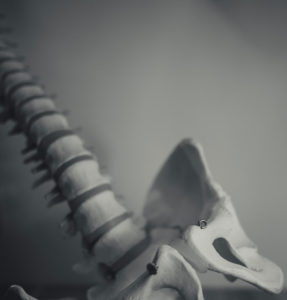Janes Spinal Care
Structural Chiropractor in Greenville, SC
What Is A Structural Chiropractor?
Chiropractic care can help ease back pain for patients. There are two types of chiropractic care: traditional and structural. The traditional method is where chiropractors help reduce pain and improves mobility. The structural chiropractic method goes further in the restoration of the function of the spine.
Structural Chiropractors don’t just focus on secondary conditions. They also consider the patient’s symptoms and pay close attention to the foundation of the spine. The chiropractor can tailor their treatment to the individual patient’s needs based on the symptoms and the chiropractor can then address the problem of vertebra shift by aligning or stimulating the muscles, ligaments and nerves.
You can break down the foundation of your spine into different components. These components together create a structural shift. This is a collection or changes to the spine that affects the functions of your body. Chiropractors can relieve secondary conditions such as pinched nerves and back pain by focusing their energy on correcting the spine’s structure. Structural chiropractors look under your car to find the alignment issues.
Four types of analysis are used by structural chiropractors to analyze the spine’s structure. Thermography Heat scans of your spine, Structural Postural Assessment, Neurological Assessment and Specific Spinal X-Rays.They can then create a plan for the patient and schedule further consultations to determine the best treatment.
Structural Chiropractic Treatment
The chiropractor will conduct a detailed pictured analysis of the patient and talk about any secondary conditions or past health history. To provide the best possible care, chiropractors will consider whether the pain is related to an accident or daily life.
Then, one of the four types of analysis mentioned above will help determine if the patient is experiencing pain from a structural shift in their spine. The chiropractor can then determine the exact location of the misalignment by using X-rays.
If you are now certain that there is a problem, and elect to not have surgery by following a specialized care plan of the chiropractor, the following techniques may be used to correct structural problems.
- Structural Chiropractic Adjustments
- Spinal Decompression
- Exercise and stretching are two of the best ways to recover from injury
- Structural soft tissue reconstruction
- Orthotics
- Nutritional guidance
As no one is perfectly shaped, many adults will experience back pain at some point in their lives. If you experience the following symptoms, it is worth consulting a chiropractor to perform a specific spinal and neurological evaluation.
- Nerves pinched
- Sciatica pain
- Low back pain
- Neck pain
- Tingling and numbness
- Facet syndrome
- Arthritis
- Compression of the spinal cord
- Herniated discs
- Degenerative disc disease
Benefits of Structural Correction
Structural chiropractic care has been shown to be the best form of natural healthcare. By restoring proper function to the body, structural correction is one the best and most effective ways to improve your quality of life.
Here are some benefits to receiving structural correction from your chiropractor.
- Strengthened Function and Improvement – In cases of chronic joint pain, the brain can be trained to correct itself. You can use the proprioceptive signals from a particular area. This references the ability of a stimulus’ proprioceptive signal to sense movement and position of the body. People can perform the movements they require for their bodies and then input them to the neurons.
- Better Nutrient Supply Some joints structures don’t have blood flow. These joints get nutrients from movement. After sitting too long, many people feel stiff in their joints. The muscles surrounding the joint contracting is what causes this feeling. Specific structural chiropractic adjustments can help you regain your full range of motion and synovial fluid movement to lubricate the joints.
- Lower Nerve Pressure – The nerves and the bundles of nerves are soft tissue. Because they are sensitive to pressure, nerves and nerve bundles aren’t resilient to inflammation or bulging discs. This can cause problems with nerve conduction. There are many symptoms that can be caused by a stuck joint, depending on the pressure applied to the nerve and the reason for the bulging discs. The chiropractor may be able to adjust your joints to the correct position. This will promote a reduction in pressure on nerves and nerve bundles.

Find a Structural Chiropractor in Greenville, SC
Janes Spinal Care offers personalized chiropractic treatment programs for Structural Chiropractic treatment. Contact our team of chiropractic professionals today to schedule your consultation!
Frequently Asked Questions
What are the two main types of chiropractors?
There are basically two types of Chiropractors. The musculoskeletal Chiropractors who focus on symptom relief and the traditional wellness Chiropractors who work on subluxations and structural correction.
Why do chiropractors require so many visits?
To achieve maximum benefits, most injury and pain types will need somewhere between four and twelve sessions. Ongoing maintenance is used to prevent pain from coming back and to prevent additional injuries from forming due to a misalignment of the spine.
What happens to spine during chiropractic adjustment?
A chiropractic adjustment typically involves a high velocity, low amplitude thrust to a misaligned vertebra and can include an accompanying, audible release of gas (joint cavitation) that is caused by the release of oxygen, nitrogen, and carbon dioxide which releases joint pressure.
Can you realign your own spine?
However, while it might be tempting to try to self-correct your spinal misalignment at home, it is never recommended to do so without the help of a medical professional.
How often should you get a chiropractic adjustment?
When you are just starting a new treatment plan, it’s common to have adjustments multiple times a week. As your body begins to heal, that number could drop to just once a week. And if you are pain-free and simply wanting to maintain your lifestyle, you might only need to get an adjustment once or twice a month.


